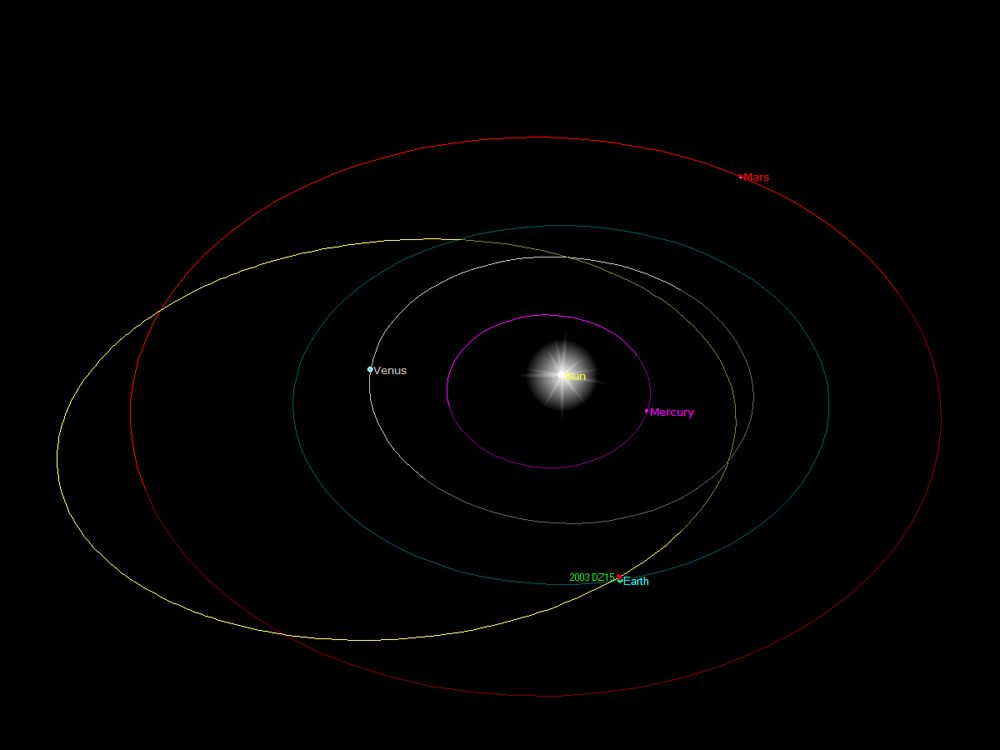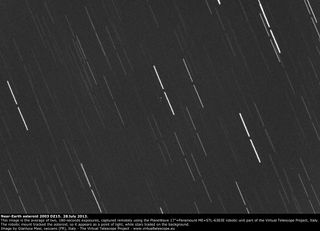
An asteroid as large as five football fields will zoom by Earth tonight, and you can watch the close approach live from the comfort of your home.
The near-Earth asteroid 2003 DZ15 will come within 2.2 million miles (3.5 million kilometers) of our planet — about nine times farther than the distance between Earth and the moon — tonight (July 29) at 8:37 p.m. EDT (0037 GMT on July 30). There is no chance that 2003 DZ15 will strike Earth on this pass, scientists say.
The online Virtual Telescope Project will stream live footage of 2003 DZ15 beginning at 6 p.m. EDT (2200 GMT) tonight. The webcast will use views from a powerful telescope in Ceccano, Italy, along with live commentary by astrophysicist Gianluca Masi, who runs the Virtual Telescope Project. You can watch the feed of 2003 DZ15's flyby here on SPACE.com, or follow it at the Virtual Telescope Project's site here: http://www.virtualtelescope.eu/webtv/

The 500-foot-wide (152 meters) asteroid will be too faint for most skywatchers to observe from their backyards, but folks can get a good look on their computer screens. Despite its large size, 2003 DZ15 is still far enough from Earth that it appears as a pinprick of light against a star field as seen by the Virtual Telescope Project instrument.
Follow Mike Wall on Twitter @michaeldwall and Google+. Follow us @Spacedotcom, Facebook or Google+. Originally published on SPACE.com.
Sign up for the Live Science daily newsletter now
Get the world’s most fascinating discoveries delivered straight to your inbox.













